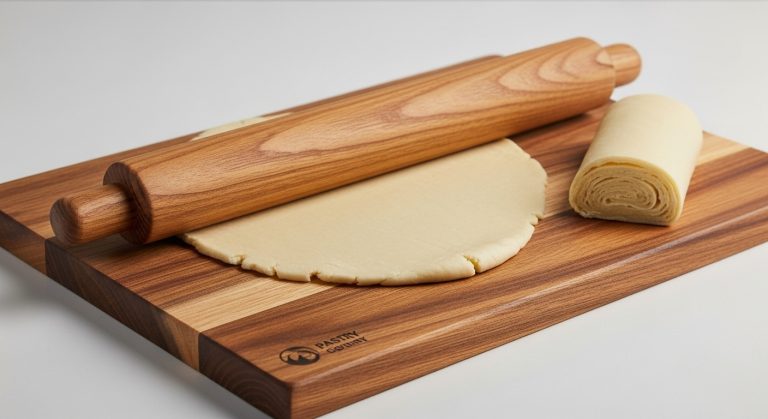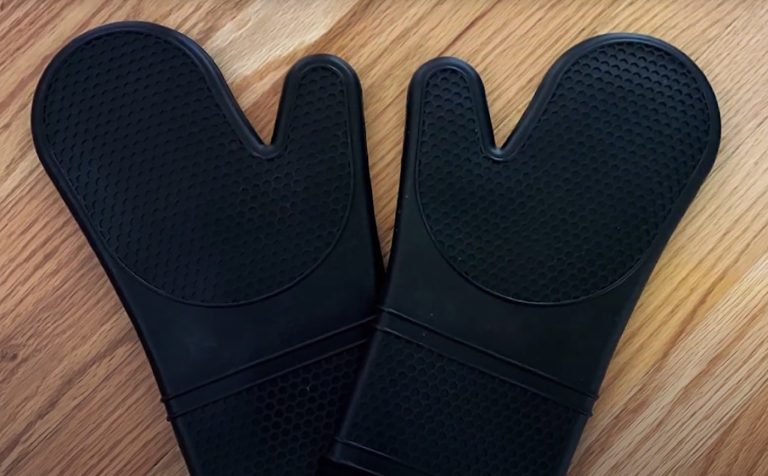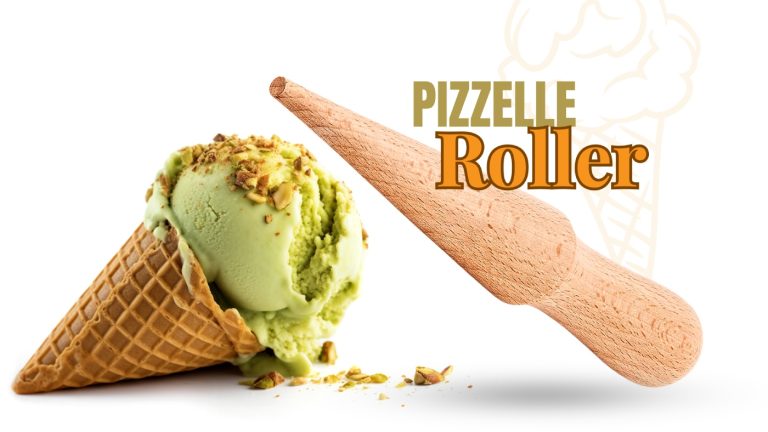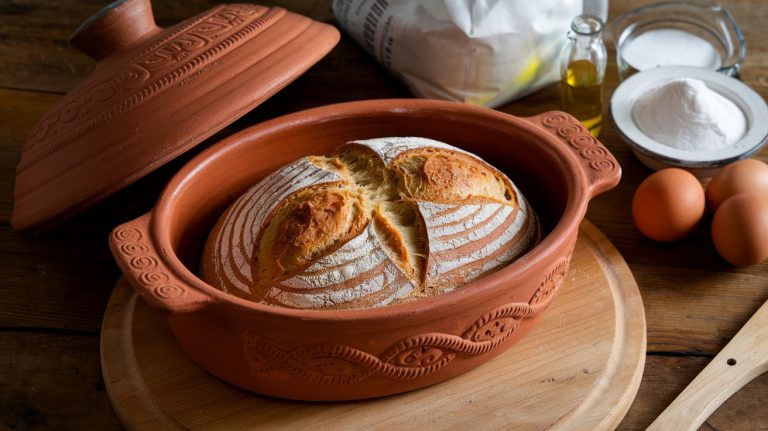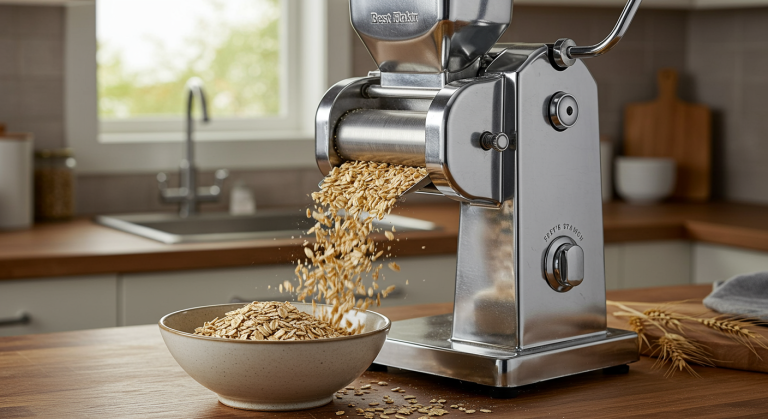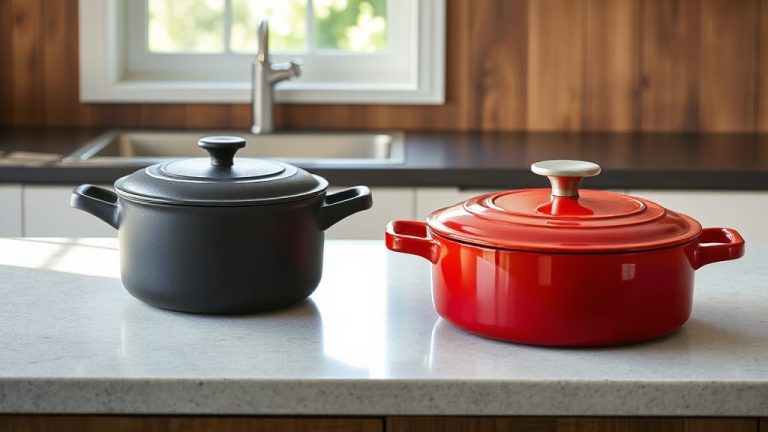Mockmill vs Komo: Making the Smart Choice
When choosing between Mockmill and KoMo, you’re looking at two German-engineered grain mills with distinct strengths. Mockmill offers eco-friendly Arboblend® bioplastic housings and powerful motors—360W for the 100 model, 600W for the 200—delivering 100-300g of flour per minute.
KoMo boasts solid beechwood or walnut builds, quieter operation at 88-89dB, and larger 75-140mm grinding stones. Both excel in grind adjustability with corundum-ceramic burrs. Stick around to uncover deeper insights into their performance.
Key Takeaways
- Mockmill offers eco-friendly Arboblend® bioplastic housing, while KoMo uses solid beechwood or walnut.
- Mockmill 100 grinds 100g/min, whereas Mockmill 200 grinds 300g in 1:30 minutes; KoMo’s speed varies by model.
- KoMo operates quieter at 88-89dB, while Mockmill runs cooler at 122.2°F.
- Mockmill adjusts grind with a side lever, while KoMo uses a rotating hopper for stepless settings.
Brand Background and History
Diving into the origins of Mockmill and KoMo, you’ll find two innovative minds behind these brands: Wolfgang Mock and Peter Koidl.
Starting in 1975, Mock’s passion ignited after tasting bread from freshly milled flour.
Frustrated by subpar mills, he built his first with friend Harald in 1976, founding HAWOS Kornmühlen.
Later, with Thomas Mohr, he developed Fidibus technology, pushing innovation further.
Meanwhile, Koidl, an Austrian pioneer, laid KoMo’s roots in 1985.
You’ll see their collaboration formalized in 2002 as KoMo GmbH, merging Mock’s Fidibus mills and Koidl’s Penningberger mills under a name blending their surnames. This partnership has led to the development of mills like the KoMo XL Plus, featuring a 600-watt motor for efficient grinding.
Together, they’ve combined technical expertise for over 40 years, aiming to deliver high-quality, accessible home milling solutions globally through continuous refinement and dedication.
Their mission aligns with promoting the valuable cereal nutrients found in freshly ground flour.
Design and Build Quality
Moving from the rich history of Mockmill and KoMo, let’s explore how their design and build quality reflect their commitment to excellence.
You’ll notice KoMo’s elegant design, crafted from solid beechwood or walnut with finger-jointed corners, offering a classic, art-like counter presence.
KoMo’s stunning design, crafted from beechwood or walnut with finger-jointed corners, brings a timeless, artistic elegance to any countertop.
Mockmill, however, uses eco-friendly Arboblend® bioplastic in standard models (100/200), resembling plastic, while Lino models feature luxurious birchwood housing.
In build quality, KoMo’s sturdy wood construction and precision assembly in Austria and Germany guarantee durability, backed by a 12-year warranty.
Mockmill matches this robustness with custom corundum-ceramic stones and quiet motors, though standard models carry a 6-year warranty. Mockmill’s custom corundum-ceramic stones also contribute to a low-heat milling process, preserving essential nutrients.
KoMo’s cabinets feel more solid, but Mockmill prioritizes affordability without sacrificing strength or compact design for your kitchen space.
Additionally, KoMo’s commitment to sustainability is evident through their partnership with PEFC for sustainable forest management.
Milling Performance Comparison
How does the milling performance of Mockmill and KoMo stack up when you’re grinding grains for your daily baking?
Let’s delve into the data.
You’ll notice Mockmill often mills faster, with the Mockmill 100 producing 100g of fine flour per minute and the Mockmill 200 hitting 200g, compared to KoMo’s typical 100g across models like the Classic. This difference can be attributed to variations in motor power, as seen in models like the KoMo with its 360-watt motor.
In tests, Mockmill 200 grinds 300g in just 1:30, while KoMo Fidibus 21 takes 4:15.
On texture, both use corundum-ceramic burrs, delivering fine to coarse results. Additionally, Mockmill excels in producing finer flours, which often results in better bread quality.
Heat-wise, Mockmill runs cooler, with flour at 122.2°F versus KoMo’s 129.6°F for 1300g.
Noise levels differ too—KoMo’s quieter at 88-89dB against Mockmill’s 91-96dB, though Mockmill’s quicker milling shortens the duration.
Grind Adjustability and Features
Beyond milling speed and output, you’ll want to evaluate how Mockmill and KoMo handle grind adjustability and additional features to fine-tune your flour texture.
With KoMo, you adjust the grind by rotating the hopper bowl, aligning an index to a scale for stepless coarse-to-fine settings, even during milling.
Mockmill uses a side lever for continuous adjustment from fine (position 1) to coarse (position 10+), with an option to shift the range coarser by repositioning the lever.
Both mills offer versatile textures using corundum-ceramic stones, though KoMo might produce slightly finer flour, while Mockmill excels at fine corn flour in one pass. This feature enhances the mill’s ability to process various grains, providing flexibility for different baking needs. For optimal results, always turn on the mill before adding grains to prevent plugging issues.
KoMo’s adjustment feels intuitive; Mockmill’s lever aids repeatable settings but adjusting finer during milling can be tougher due to grain resistance.
Model Specifications Overview
When comparing Mockmill and KoMo, you’ll notice distinct differences in their model specifications, spanning housing materials, motor power, grinding stone sizes, hopper capacities, and physical dimensions.
You’ll see KoMo mills often use solid beechwood or walnut, like the Fidibus 21 with beech plywood and solid beech components, while Mockmill opts for Arboblend® bioplastic or Terluran® GP-35, with Lino models blending wood and HI-MACS® stone.
Check the motor power: Mockmill 100 offers 360 watts, scaling to 600 watts in the 200 series, whereas KoMo Fidibus 21 runs at 250 watts, with Classic models at 360-400 watts.
Grinding stones, both corundum-ceramic, differ—Mockmill’s at 90 mm versus KoMo’s 75-140 mm. For comparison, the Country Living Grain Mill features high-carbon steel burrs that contribute to its exceptional durability.
Hopper capacities range from KoMo’s 850-1,200 g to Mockmill’s 1,100-1,300 g.
Dimensions and weights also vary considerably.
Additionally, KoMo mills, such as the Classic Electric Grain Mill, are praised for their durability and ease of use, as reflected in high customer satisfaction ratings.
Speed and Output Analysis
As you compare Mockmill and Komo mills, you’ll notice significant differences in milling speed, with Mockmill models like the 200 often outperforming Komo’s Fidibus 21 in direct tests, clocking in at 200 grams per minute versus 100 grams per minute. For further comparison, the NutriMill’s milling rate of up to 5 cups per minute demonstrates its high output capacity.
You’ll also find that output capacity varies with motor power and stone size, where Mockmill’s 600W motor and larger 3.54-inch stones contribute to faster throughput compared to Komo’s 250W or 360W motors and smaller 2.95-inch stones. Additionally, user feedback highlights that Mockmill can process a cup of grain in just one minute, showcasing its remarkable efficiency.
Let’s examine how these technical specs translate to real-world performance and impact your milling efficiency.
Milling Speed Comparison
How do Mockmill and Komo grain mills stack up when it comes to milling speed and output?
You’ll notice Mockmill often takes the lead with faster rates.
The Mockmill 200, powered by a 600W motor, achieves around 200g/min for fine soft wheat flour, outpacing the Komo Fidibus 21 at 100g/min with its 250-360W motor.
Komo’s Classic and Mio models hit 227-255g/min, but Mockmill’s direct tests, like the Lino 200, show quicker results for similar tasks.
Speed varies with grain type and coarseness settings—finer grinds slow you down. In comparison, Mockmill generally avoids issues like heat generation that can affect other mills during extended use.
Motor wattage and stone design also play roles.
If speed’s your priority, Mockmill’s higher output, especially in the 200 series, often delivers a technical edge over comparable Komo models.
Additionally, Mockmill’s throughput of approximately 100 grams/minute for soft wheat aligns closely with many of its competitive models, ensuring consistent performance for home milling needs.
Output Capacity Insights
Diving into output capacity, you’ll find distinct differences between Mockmill and Komo grain mills that impact their performance for various milling tasks. Mockmill models, like the 200, often outpace Komo equivalents, milling 300g of soft wheat in 1:30 compared to Komo Fidibus 21’s 4:15.
Factors like fineness settings, grain type, and moisture affect output, with coarser grinds yielding faster results. Additionally, Mockmill sets a high standard with its corundum ceramic millstones achieving 92% fine flour content.
Check the specs below for a clear comparison:
| Model | Output (g/min) |
|---|---|
| Mockmill 200 | 200 |
| Komo Fidibus 21 | 100 |
| Mockmill Professional 200 | 200 |
| Komo XL Plus | 200 |
You’ll notice Mockmill’s efficiency often means less wastage, while Komo may leave more residue. Both brands handle continuous operation well in higher-end models.
Frequently Asked Questions
Which Mill Is Quieter During Operation?
When you’re looking for a quieter grain mill during operation, you’ll want to dig into specific noise data and user feedback.
Check decibel ratings, as lower dB levels mean less noise.
You’ve gotta consider mill construction too—materials like wood can dampen sound better.
Don’t forget that grain type affects noise; harder grains often grind louder.
Compare detailed reviews and test results to make sure you’re picking the quietest option for your needs.
How Easy Is Cleaning Each Mill?
When tackling the ease of cleaning grain mills, you’ll find the process varies.
You’ll wipe exteriors with a damp cloth for routine care.
For deeper cleaning, you’ll access interiors by disassembling parts, brushing stones dry, and grinding rice to clear residue.
You’ll notice differences in disassembly effort—some mills open without tools, while others require unscrewing components.
You’ll appreciate simpler access and minimal steps for efficient, thorough maintenance.
Can They Mill Gluten-Free Grains Safely?
You can mill gluten-free grains safely if you take specific precautions.
Make sure your mill handles grains like rice, quinoa, and millet, but avoid oily items that gum up stones.
For celiac safety, use a dedicated mill to prevent cross-contamination.
Clean thoroughly by brushing stones and grinding rice to purge residue.
If you’ve got high sensitivity, don’t risk shared use—opt for separate equipment to guarantee purity.
What Is the Lifespan of Burrs?
Imagine burrs lasting decades, yet vulnerable to a single pebble—such is their lifespan’s paradox.
You’ll find corundum-ceramic burrs, common in modern mills, engineered for durability, often enduring years of grinding from fine flour to coarse meal.
Steel burrs, too, can last 20+ years with care.
Don’t grind oily or unclean grains; they’ll wear burrs faster.
Monitor output quality—dulling signals replacement.
Maintain them well, and you’re set for longevity.
Are Replacement Parts Easily Available?
Hey, when you’re looking for replacement parts for grain mills, you’ll find they’re generally accessible if you know where to search.
Check manufacturers’ official websites for direct purchases of items like hoppers, springs, and milling stones.
Authorized dealers and distributors also stock spares, often with detailed catalogs or exploded diagrams.
For quick fixes, reach out to customer support via email or hotline to locate nearby service centers and guarantee minimal downtime.
Grind Smarter, Not Harder
As you wrap up your decision between Mockmill and Komo, consider their unique strengths. Mockmill offers affordability with solid performance, while Komo excels in precision and durability, like a finely tuned machine humming with efficiency.
You’ll find both deliver reliable milling, but your choice hinges on budget and grind finesse. Check warranty details and output needs before investing. Make your pick with confidence, knowing you’ve weighed the technical specs thoroughly.


